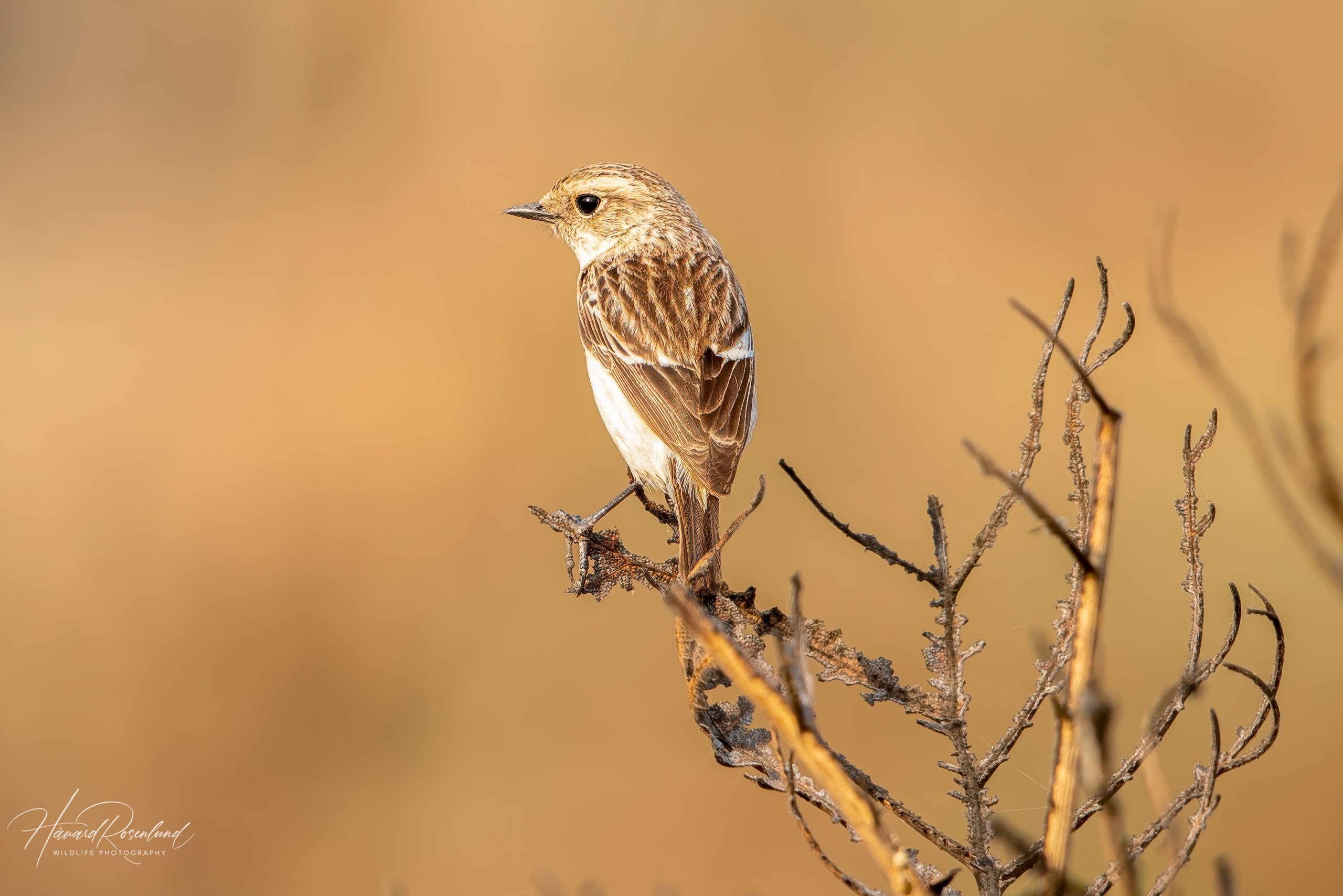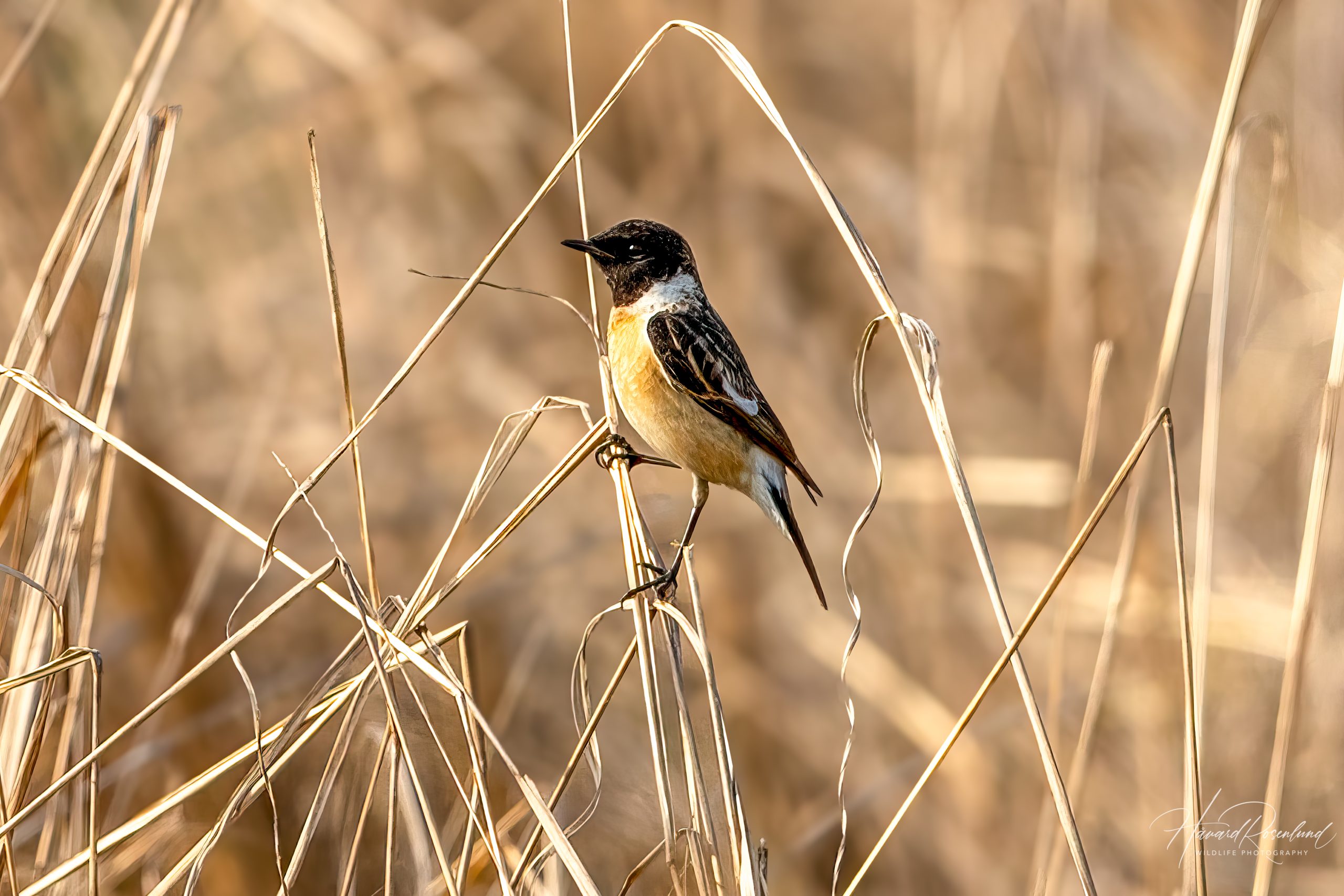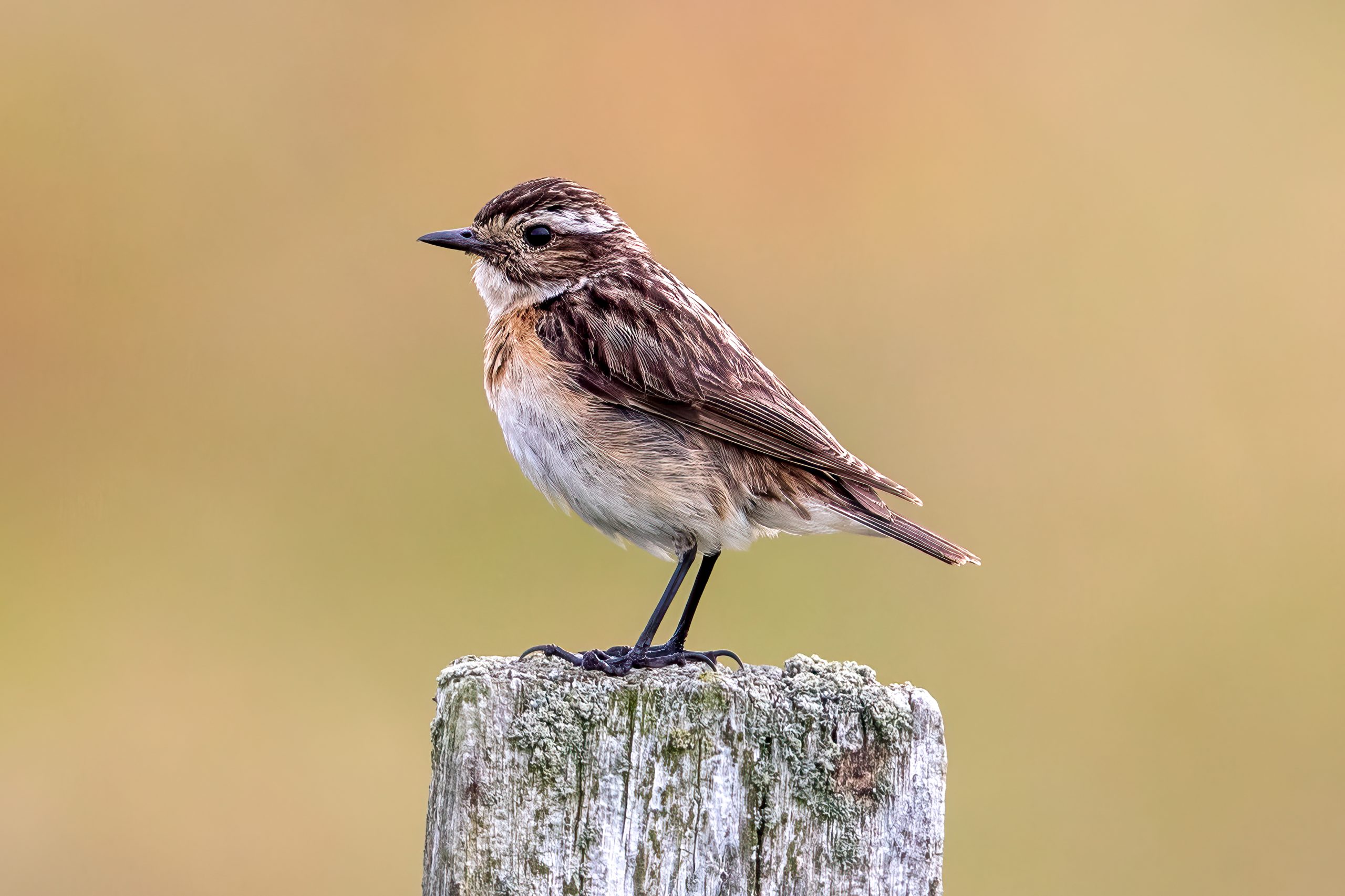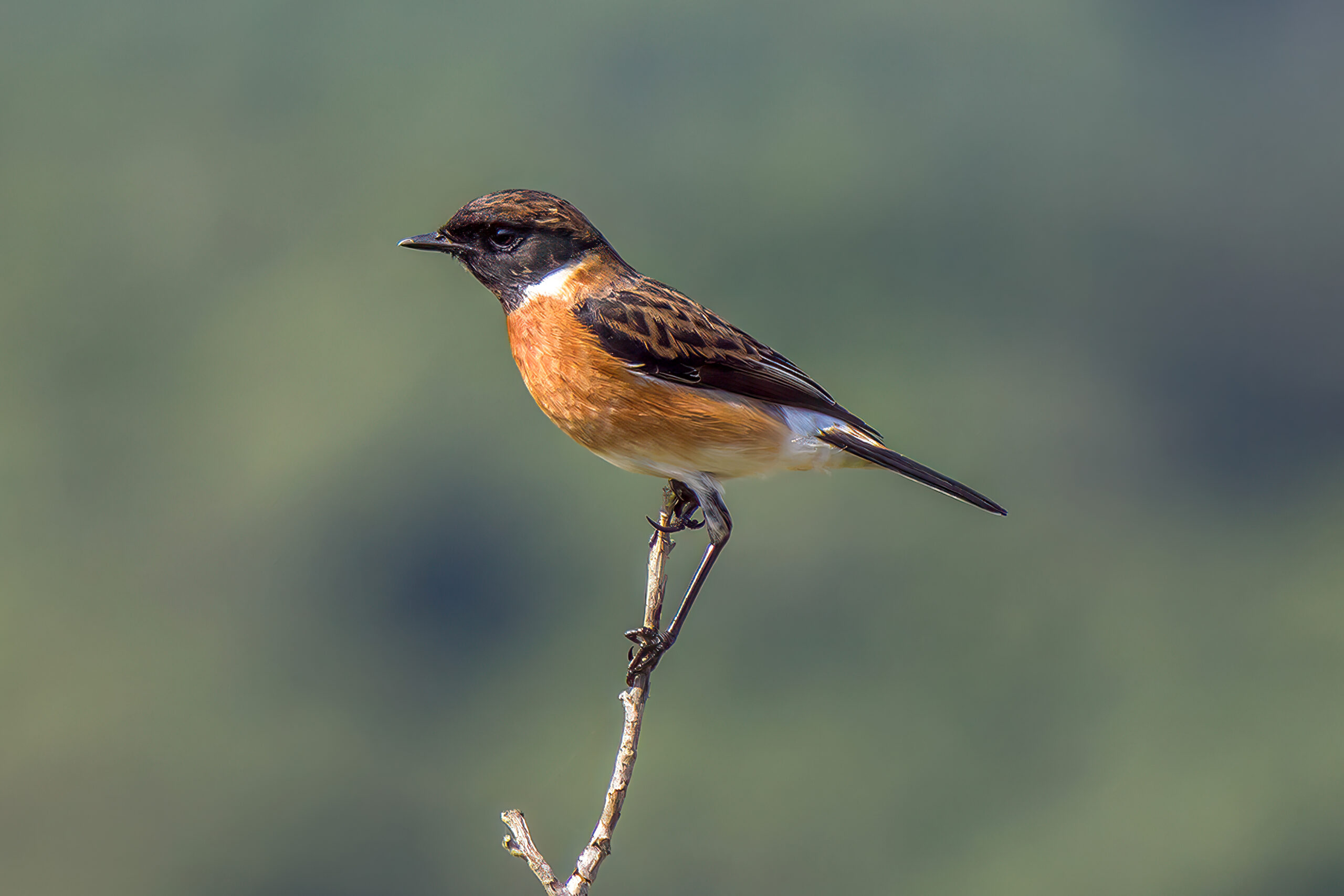Siberian Stonechat
(Saxicola maurus)
Description
The Siberian stonechat (Saxicola maurus) is a small passerine bird with a broad range extending across Eurasia, from eastern Europe and central Asia to Mongolia and Eastern China. It typically measures about 12–13 cm (4.7-5.1 in) in length and has a wingspan of approximately 18–20 cm (7.1-7.9 in). Males display a striking black head and throat, white neck patches, and a vibrant orange breast, which fades into a paler belly. Females are more subdued in coloration, with a brown head, less pronounced white neck patches, and a warm brownish-orange breast.
The Siberian stonechat was formerly considered conspecific with the European stonechat (Saxicola rubicola), the Amur stonechat (Saxicola stejnegeri), and the African stonechat (Saxicola torquatus), but it was split based on differences in morphology, vocalizations, and genetic data. Compared to its relatives, the Siberian stonechat has more pronounced white on wings and the sides of its neck, and somewhat paler underparts.
Diet & habitat
Siberian stonechats inhabit open landscapes such as grasslands, steppes, agricultural fields, and marshy areas. They prefer habitats with a mix of open ground and scattered bushes or tall grasses, which provide perching sites. These birds are insectivorous, feeding primarily on insects and other small invertebrates. They hunt from a perch, watching for prey, then sally forth to catch it mid-air or pick it off the ground. Occasionally, they may consume berries and seeds, especially during migration when insect availability is lower.
Migration
Siberian stonechats are migratory, with many populations traveling extensive distances between breeding and wintering grounds. They breed in the northern parts of their range, such as Siberia and northern Mongolia, and migrate to southern Asia, including the Middle East, the Indian subcontinent, and southern China for the winter. Migration typically occurs from September to October and again from March to April, covering distances that can exceed several thousand kilometers.
Nesting
The breeding season of the Siberian stonechat generally occurs from April to July. These birds are monogamous and establish territories during the breeding season. They build cup-shaped nests on or near the ground, often hidden among dense vegetation. The female lays 4-6 eggs, which are incubated for about 11-13 days. Both parents are involved in feeding the chicks, which fledge after approximately 12-14 days. The young are altricial, meaning they are born relatively immobile and without feathers, requiring significant parental care.
Status
The Siberian stonechat is still recognized as a subspecies of the common stonechat (which has been split into several species) by the IUCN, where it is classified as least concern. The species is widespread and generally common within its range, and it is note believed to be threatened. However, habitat loss and degradation due to agricultural expansion and changes in land use pose potential threats.







